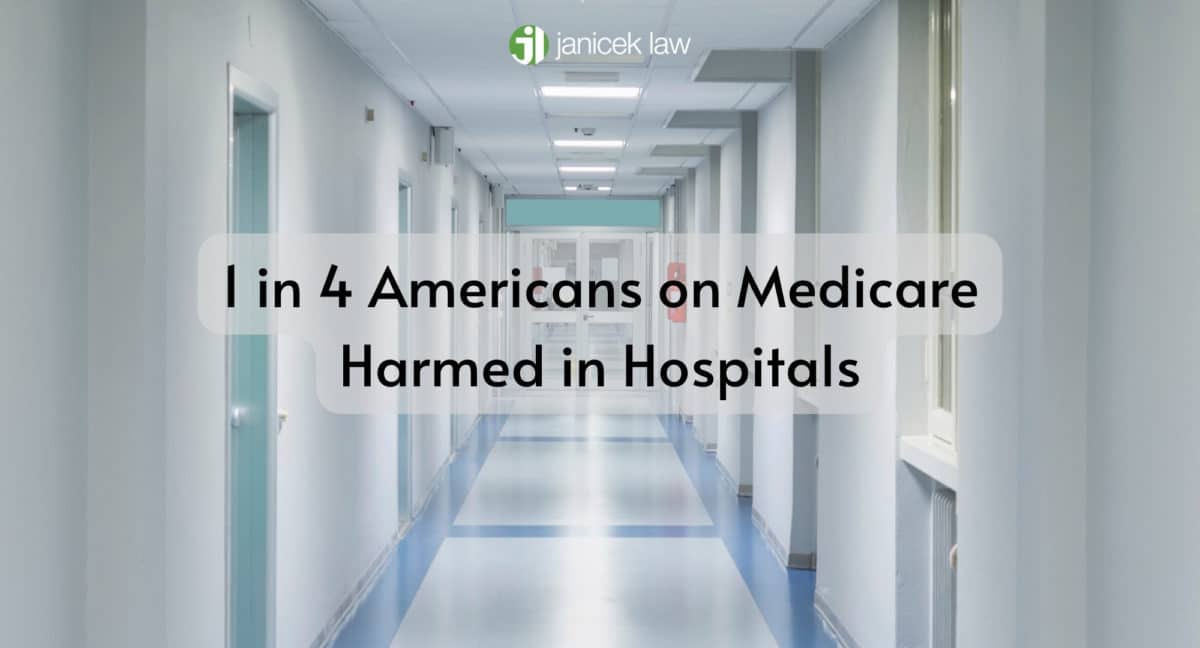According to a May 2022 report released by the U.S. Department of Health and Human Services Office of Inspector General (OIG), approximately 1 in 4 Americans (25%) suffered either temporary or permanent harm during hospital stays in October 2018. These adverse health events occurred under Medicare coverage, which is one of the largest health coverage providers in America. In fact, almost 80 million Americans receive Medicare coverage.
While this newly released statistic is alarming, it shows a slight decrease in patient harm over the last decade. According to an OIG study released in 2010, approximately 27% of Medicare patients were harmed during their hospital stays in October 2008. This original study estimates that about 50% of these adverse events in community hospitals were preventable. These harmful events were also very expensive, costing Medicare health insurance about $324 million in reimbursements and deductibles.
The goal of federal government studies like these is to improve American health care and patient safety. This is due to the alarming number of annual deaths caused by medical malpractice. In fact, a 1999 report released by the Institute of Medicine (IOM) claims that medical errors in hospitals cause up to 100,000 American deaths every year. Since the IOM released this report, the United States government, health care providers, and medical insurance companies have been working together to create fewer medical errors. For example, one of the most common and most dangerous medical errors in the U.S. involves prescription drugs. A 2019 report from the Academy of Managed Care Pharmacy (AMCP) estimates that medication errors and drug injuries in hospitals alone rack up approximately $3.5 billion every year.
Types of Harm That Medicare Patients Experienced
The OIG study included 770 patients covered by Medicare health insurance. These patients suffered two main types of harm in October 2018. 12% suffered from adverse events which resulted in permanent injury, longer hospital stays, life-saving interventions, and even death. Meanwhile, 13% experienced health events that only caused temporary harm. The temporary harm may have required some kind of medical intervention, but unlike the patients who suffered from adverse events, these patients didn’t need longer hospital stays or life-saving interventions.
The study breaks down the specific harm events even further. It states that 43% of the hospital patients involved in this study were harmed by medication errors. Medicare prescription drug coverage had to cover the costs of all extended hospital stays and life-saving interventions. Meanwhile, 23% of the harm events were caused by a lack of proper patient care, 22% were caused by procedures and surgeries, and 11% were caused by hospital-acquired infections.
Preventability of These Harm Events
To make these statistics scarier, the OIG study also claims that 43% of these harmful events were completely preventable. This means that Americans are suffering from more medical trauma than they have to because doctors aren’t taking proper care of their patients. This study also concludes that about 56% of harmful events weren’t preventable despite medical professionals following proper protocols.
Costs of Harm Events to the Centers for Medicare/Medicaid Services (CMS)
23% of the 770 patients who suffered either preventable or nonpreventable harmful events needed more medical treatment. Naturally, this medical treatment resulted in more costs covered by Medicare benefits. While the OIG didn’t provide a specific price tag, they estimate that these harmful events cost hundreds of millions of dollars in October 2018 alone.

Recommendations to the Centers for Medicare and Medicaid Services (CMS) and the Agency for Healthcare Research Quality (AHRQ)
Even though the U.S. has some of the best health care services in the world, it’s still very flawed. And with how much the average American pays for their health plan, it’s crucial for hospitals and medical professionals everywhere to prioritize patient safety. Not only will a gradual decrease in harmful events save lives, but it will also save money too.
That’s why the OIG concluded its study with recommendations to both the Centers for Medicare/Medicaid Services (CMS) and the Agency for Healthcare Research and Quality (AHRQ).
Firstly, the OIG recommends that the CMS expand its list of hospital-acquired conditions. That way, the list will include more conditions that are common, preventable, and expensive. The study also suggested that the CMS expand patient safety metrics in demonstrations and develop guidance for surveyors who assess hospital compliance and track patient care.
As for recommendations created for the AHRQ, the OIG suggests that the federal government agency effectively use the Quality and Safety Review System, create an effective model that will spread information about how to improve patient safety, and create new strategies to prevent patients from suffering from common hospital-acquired conditions.

